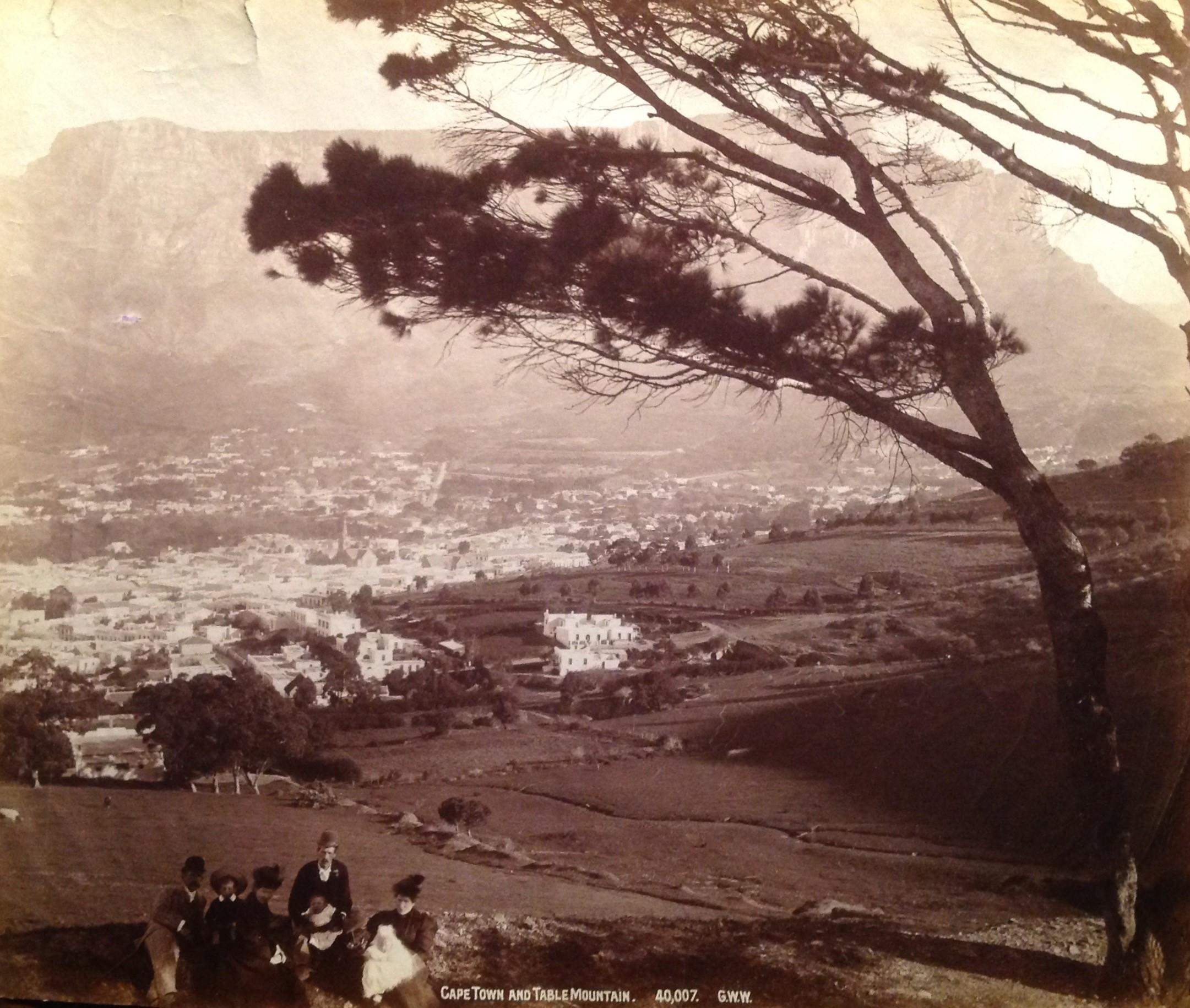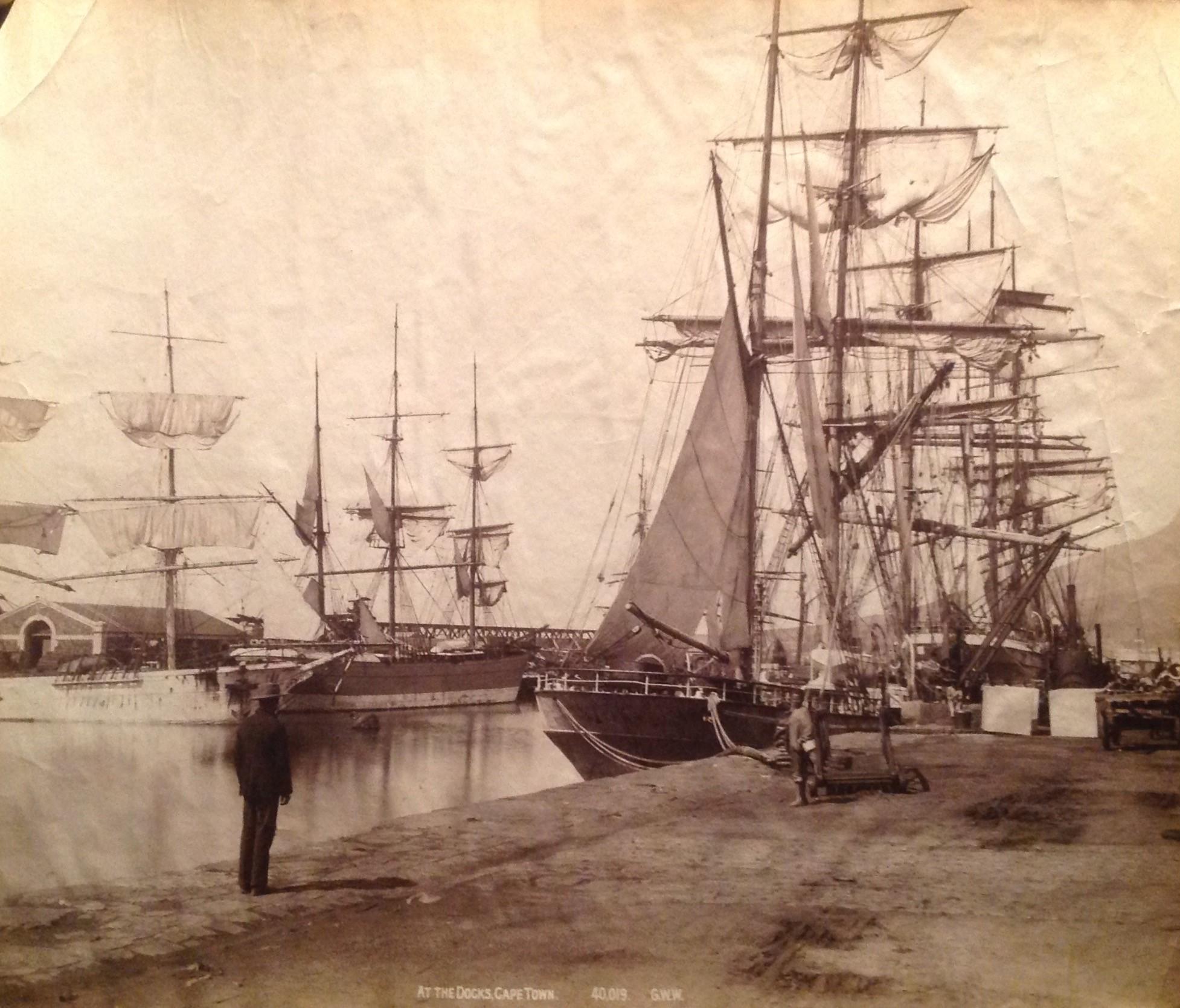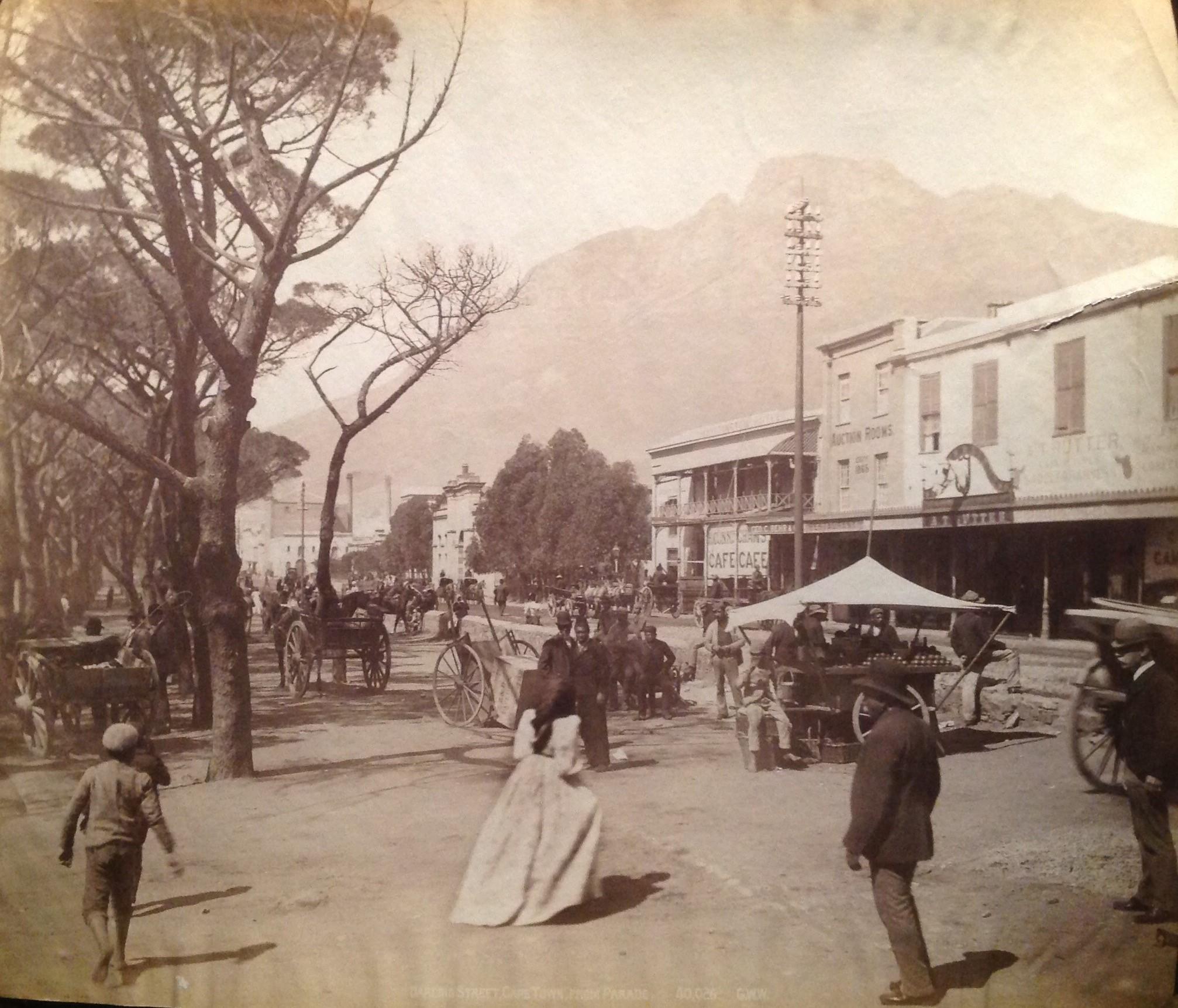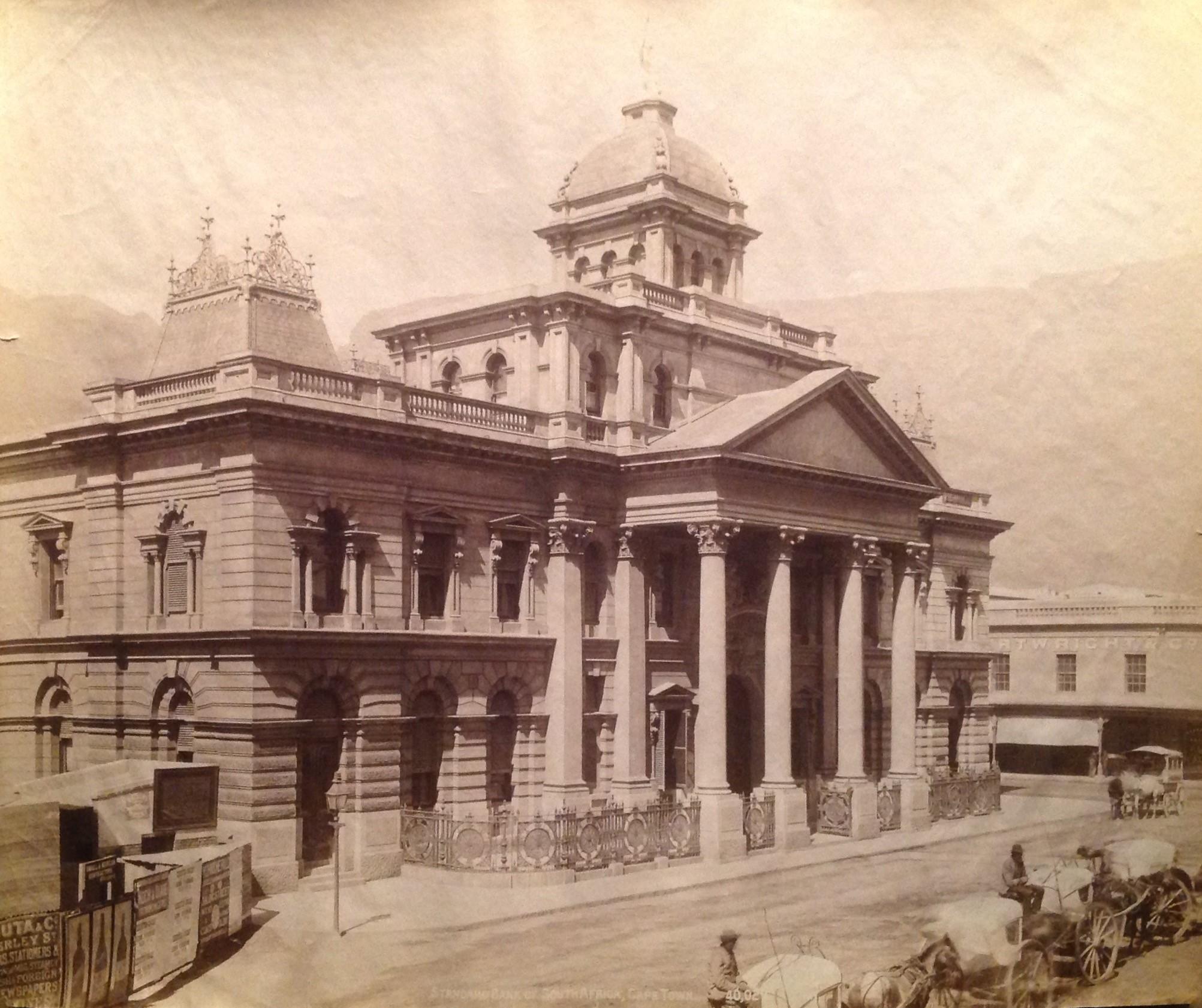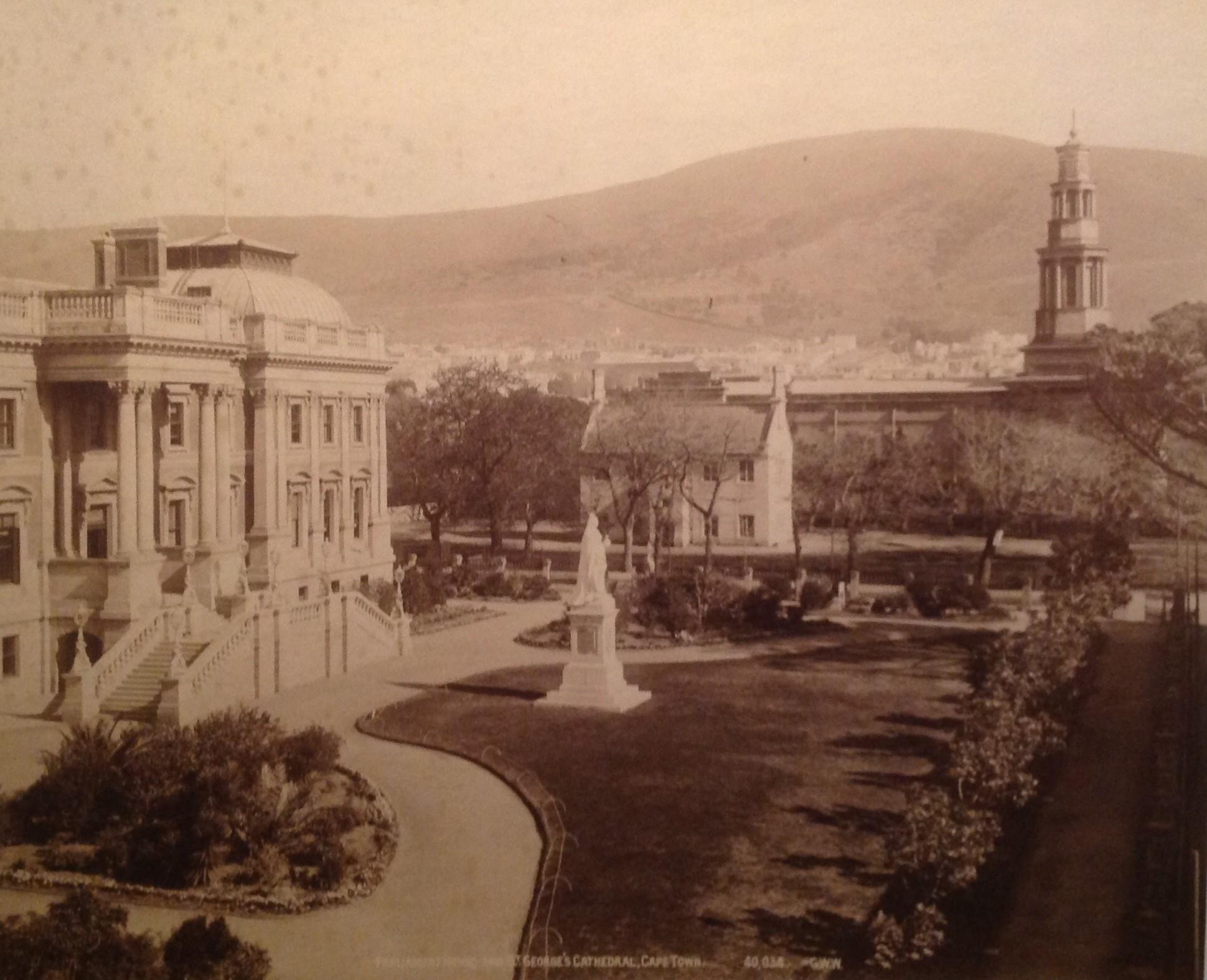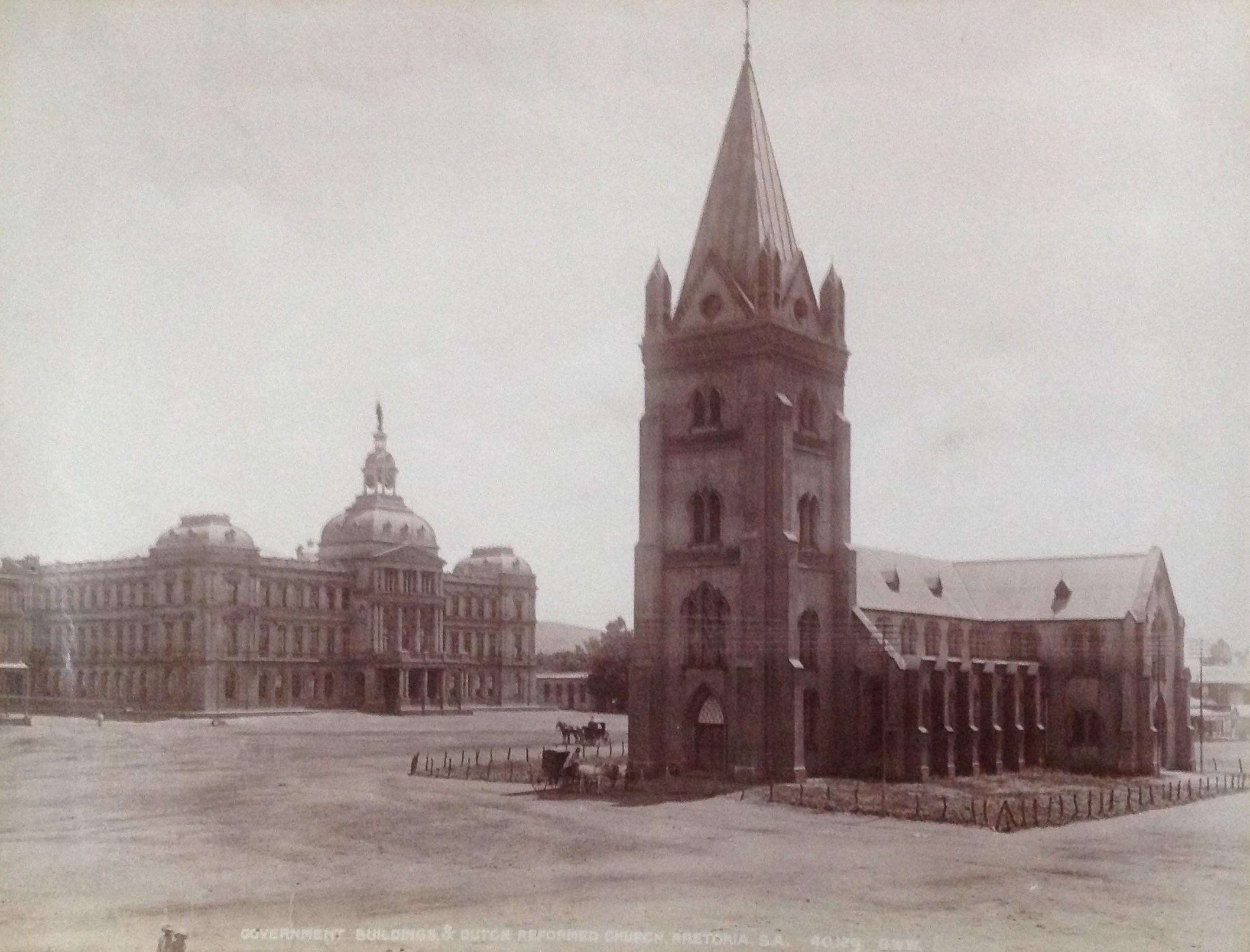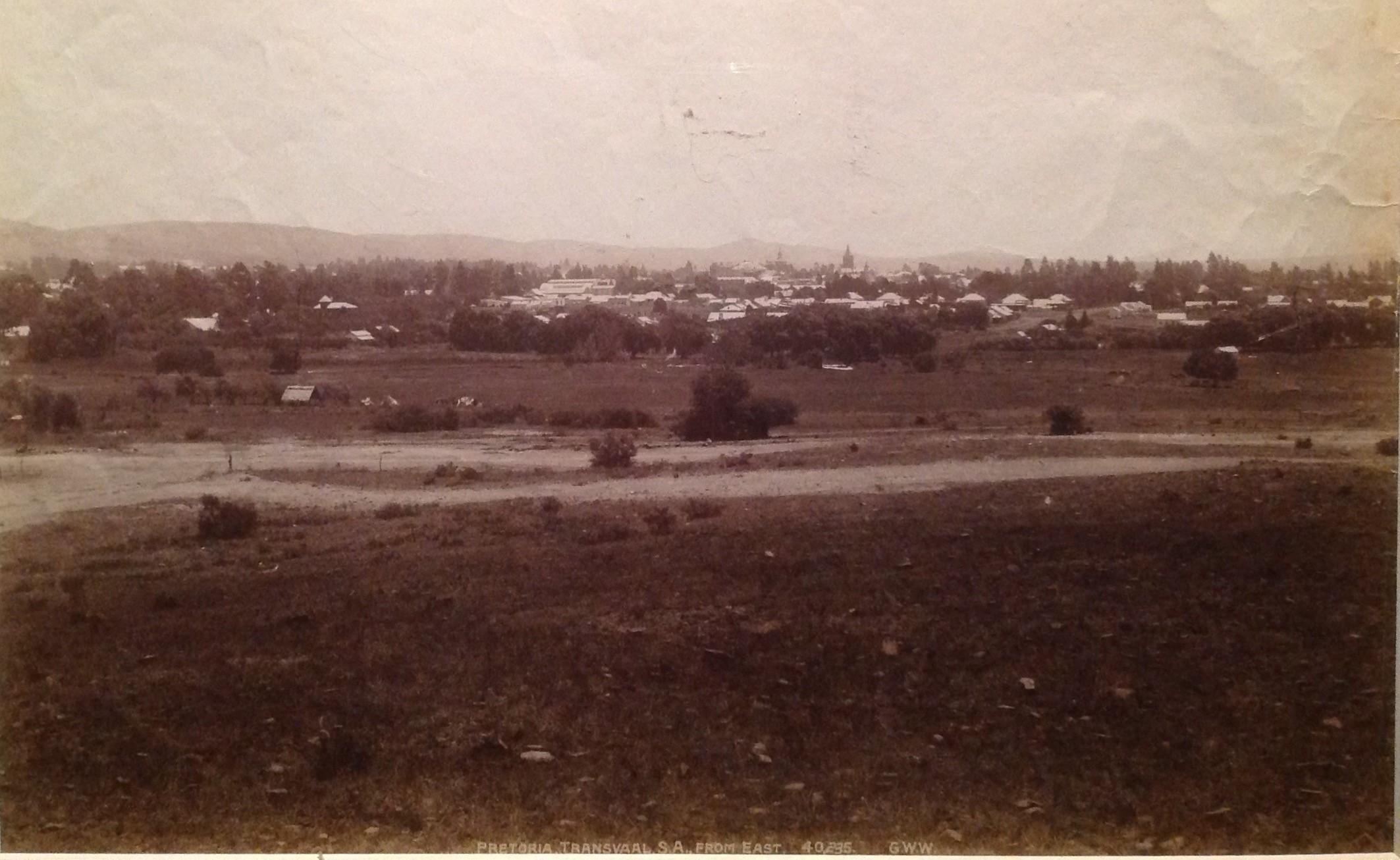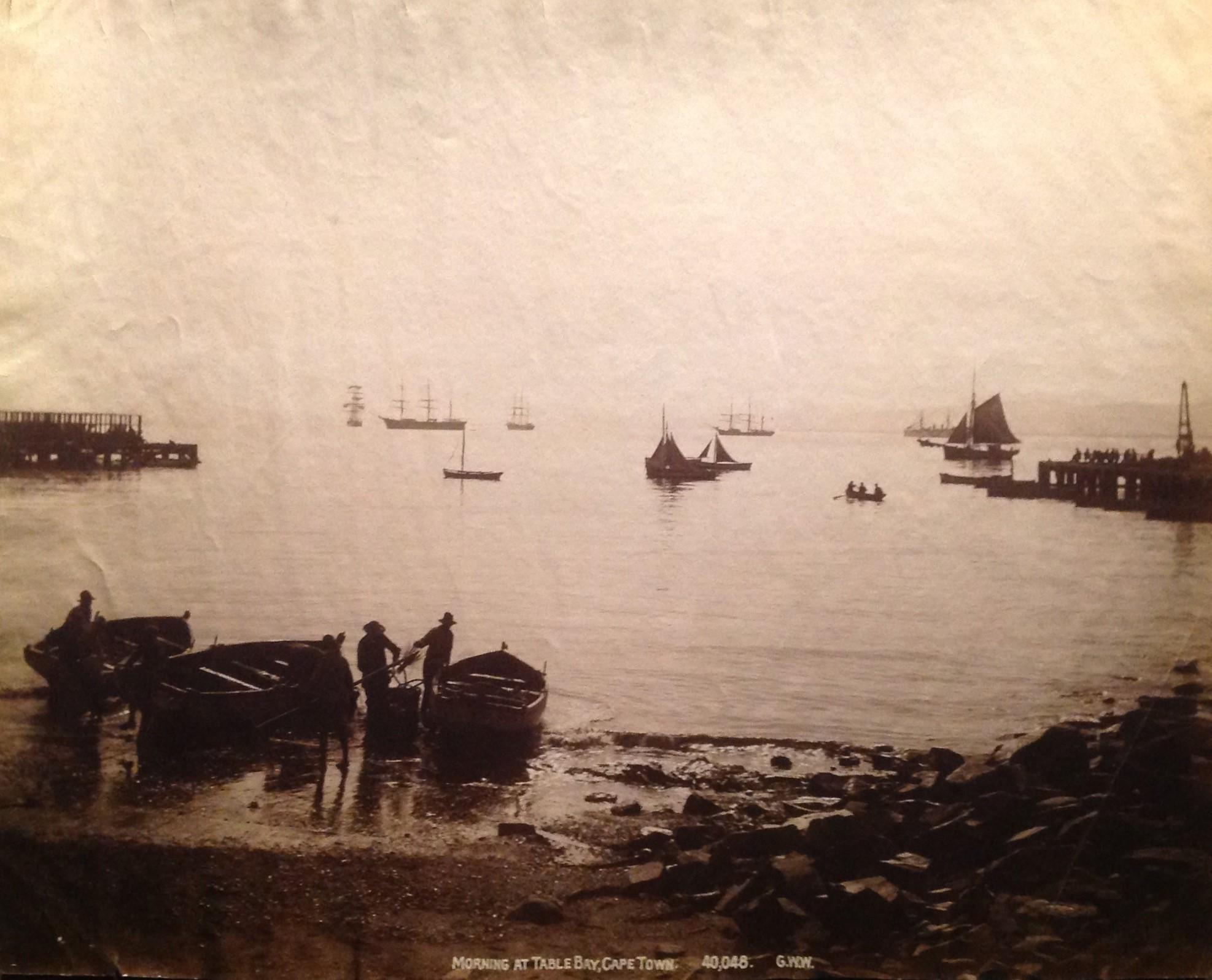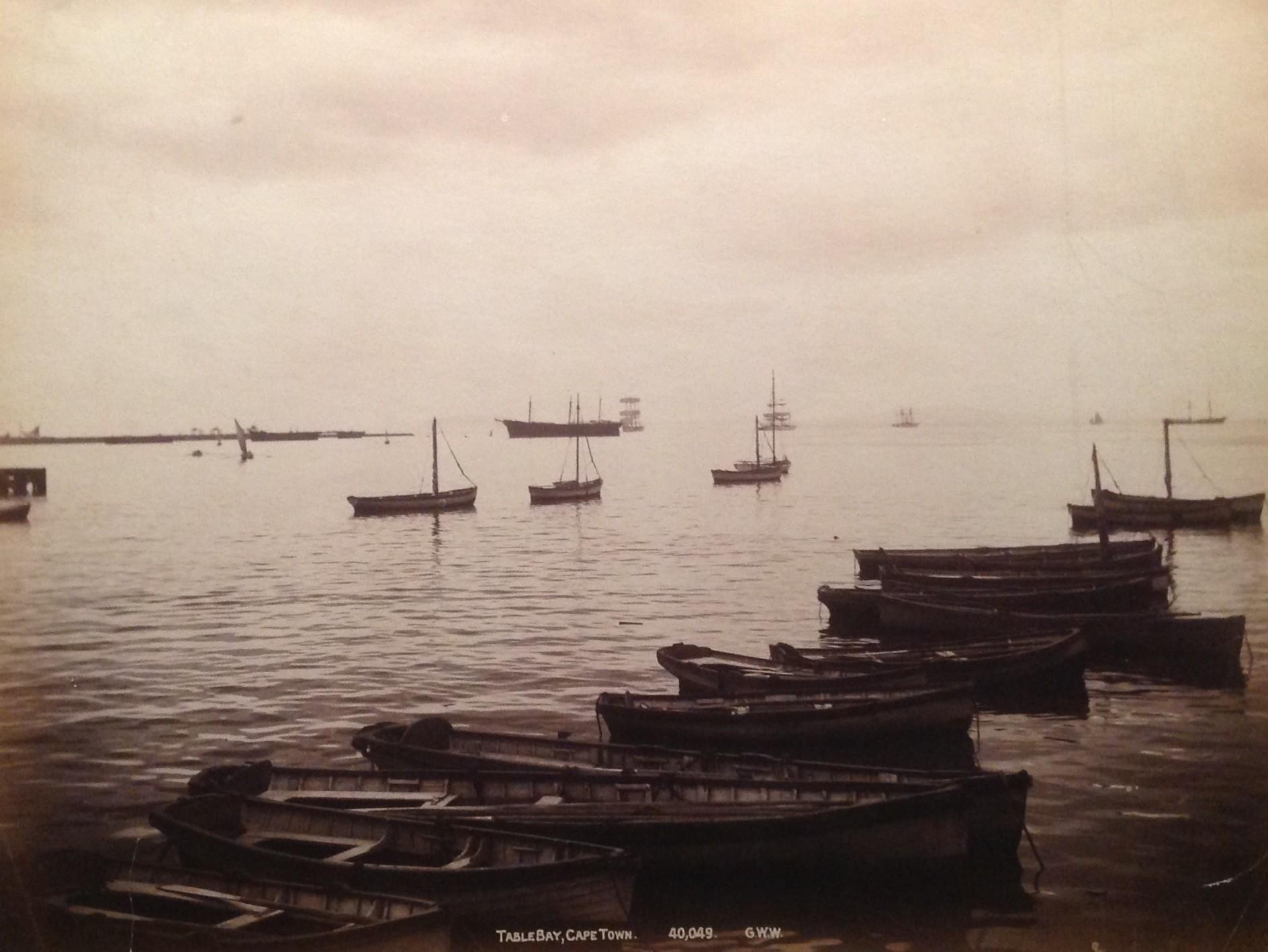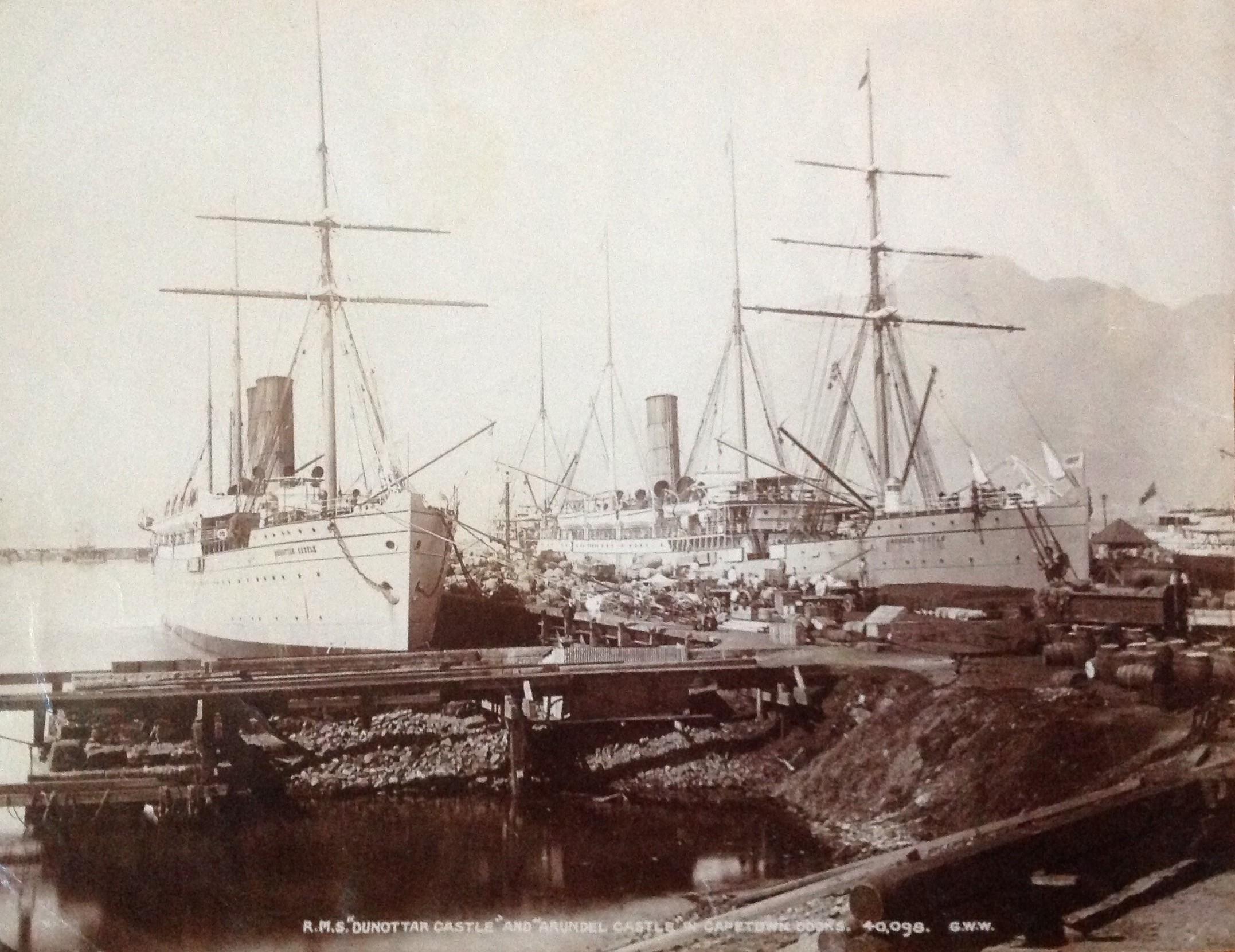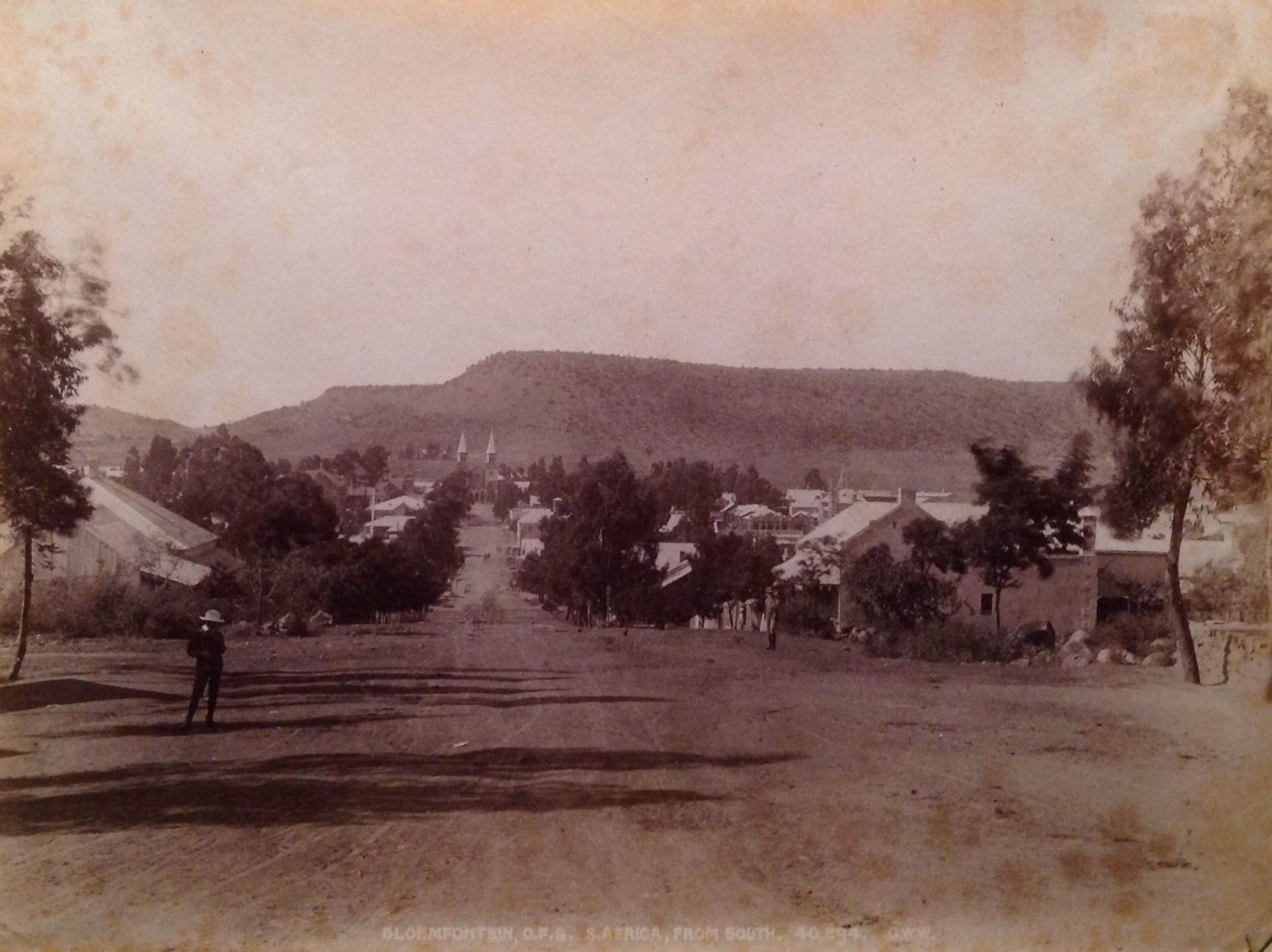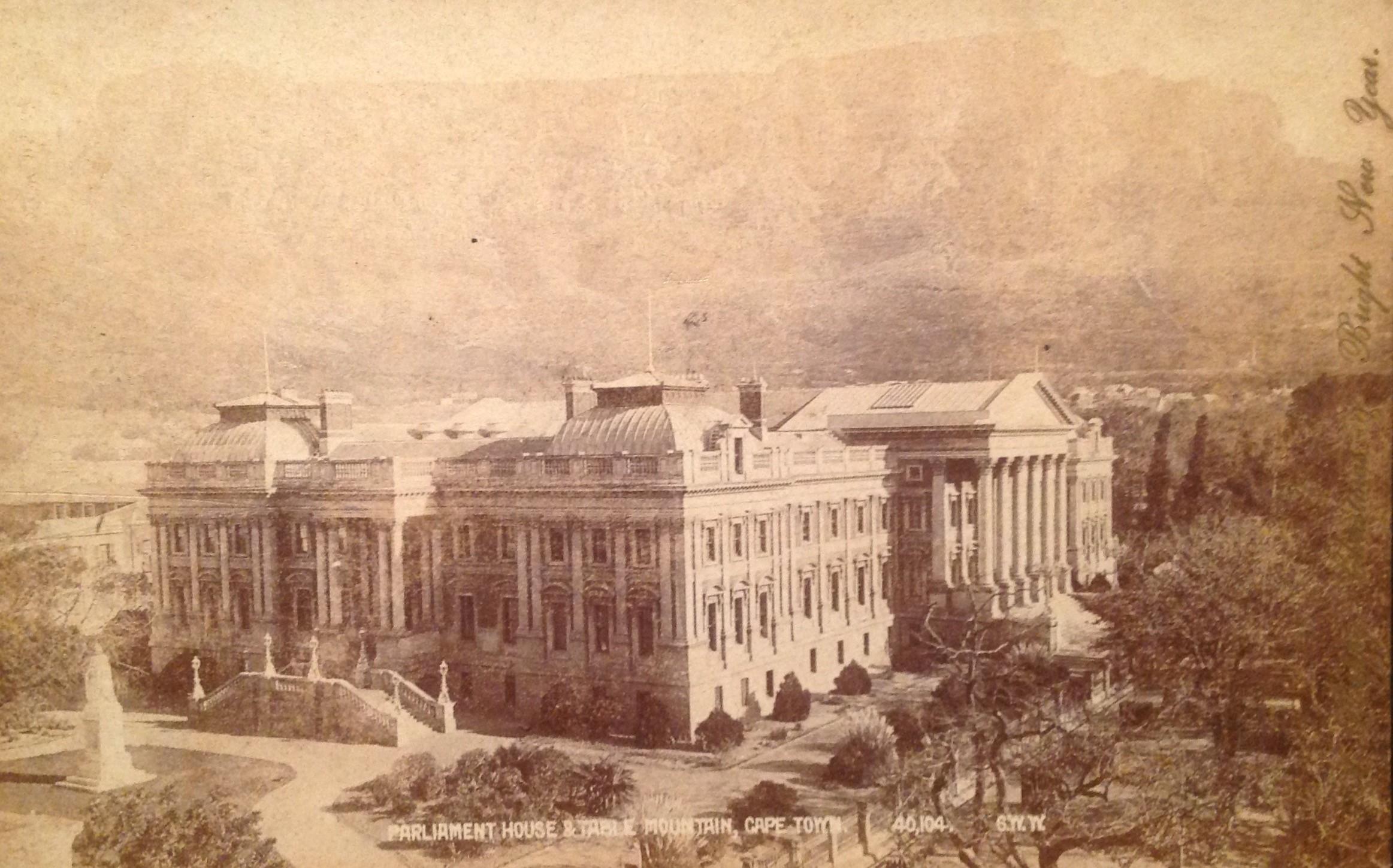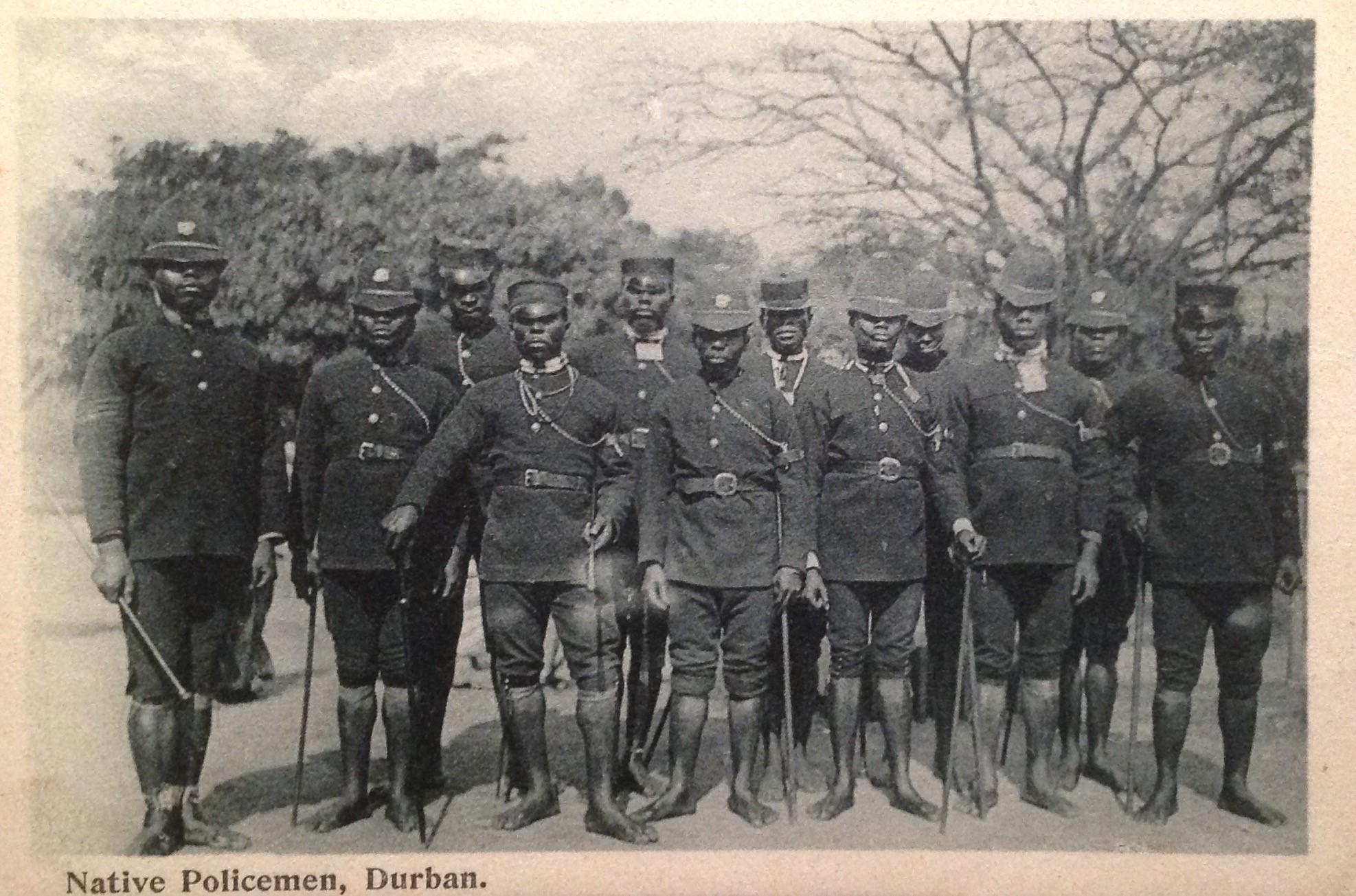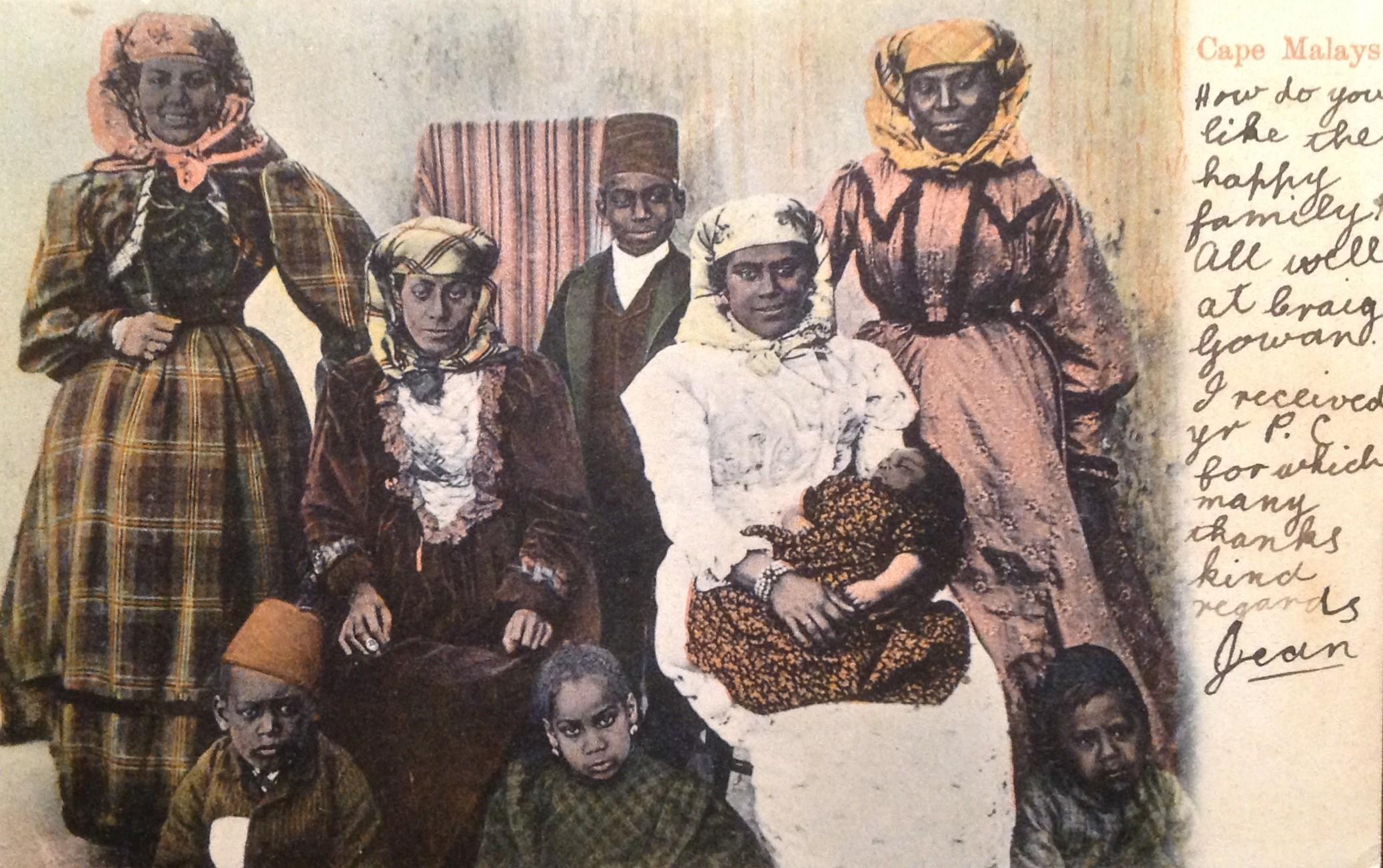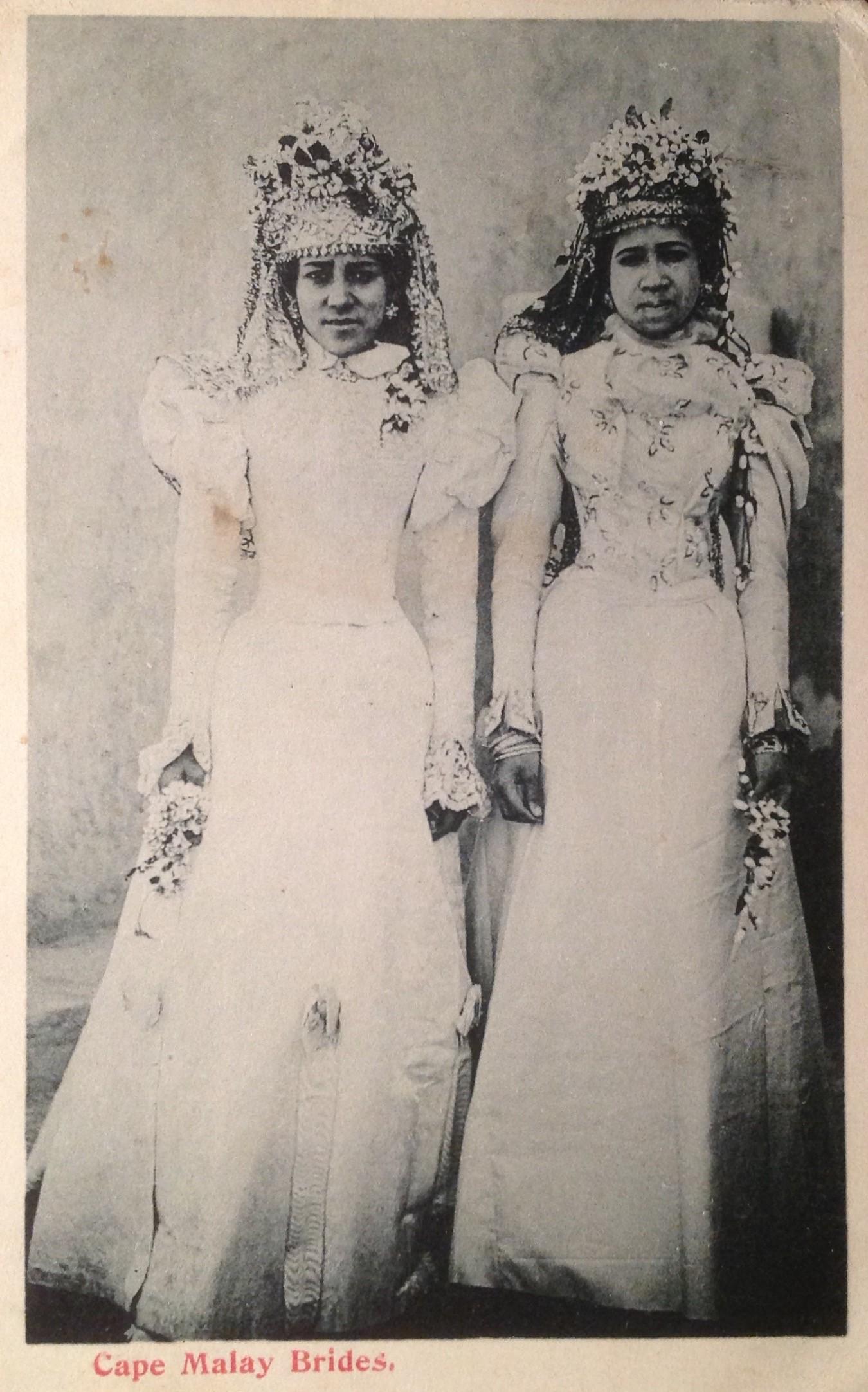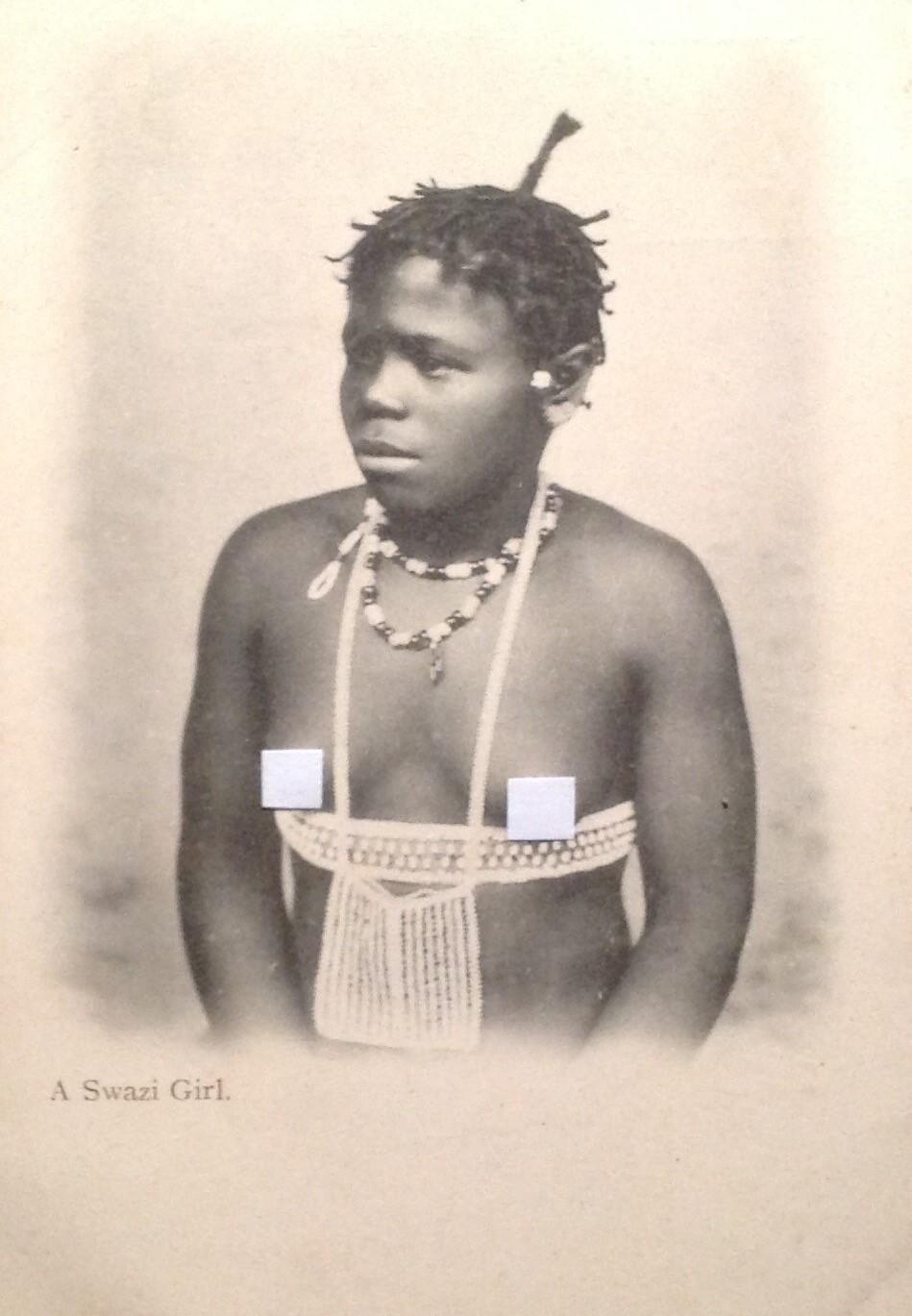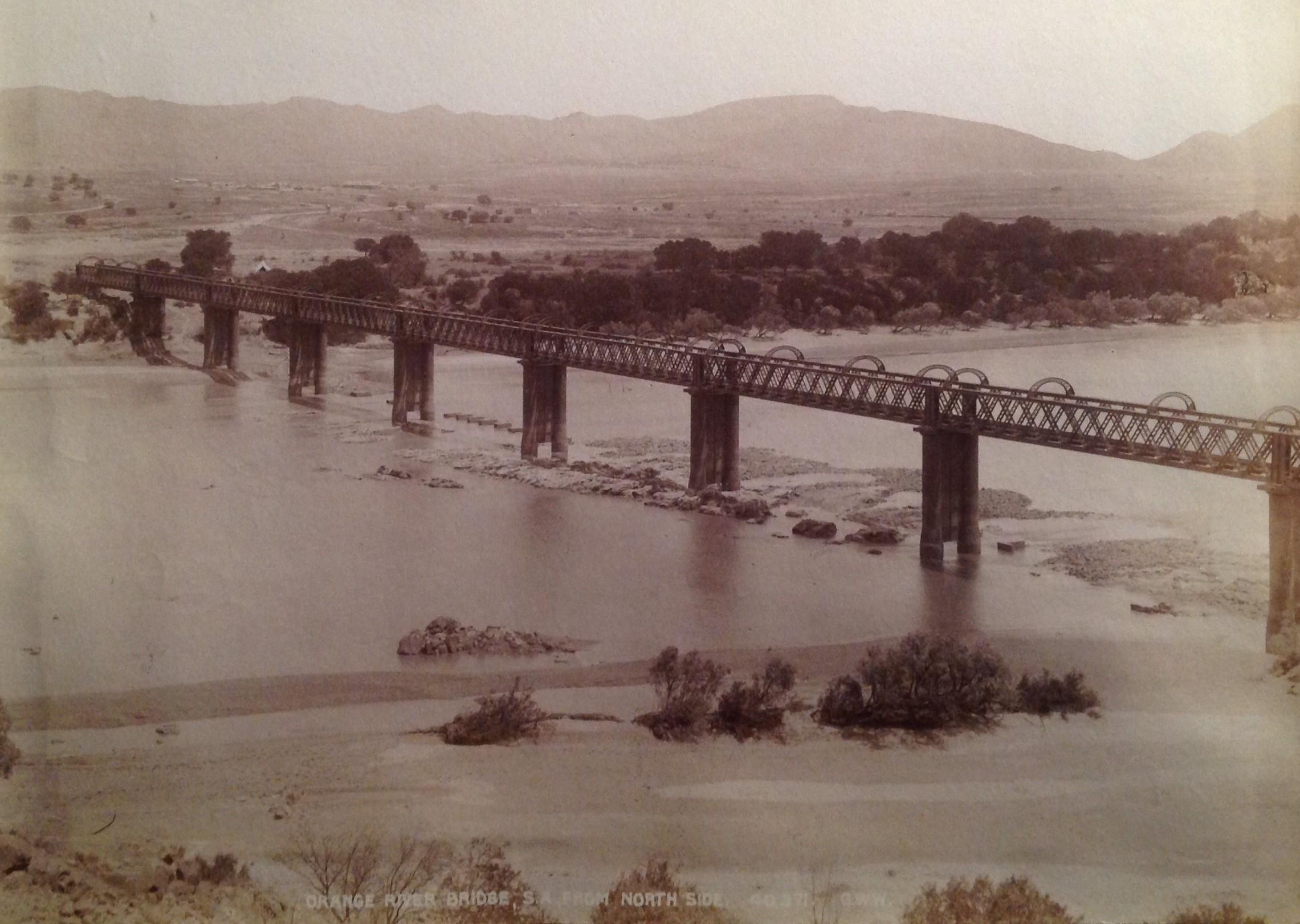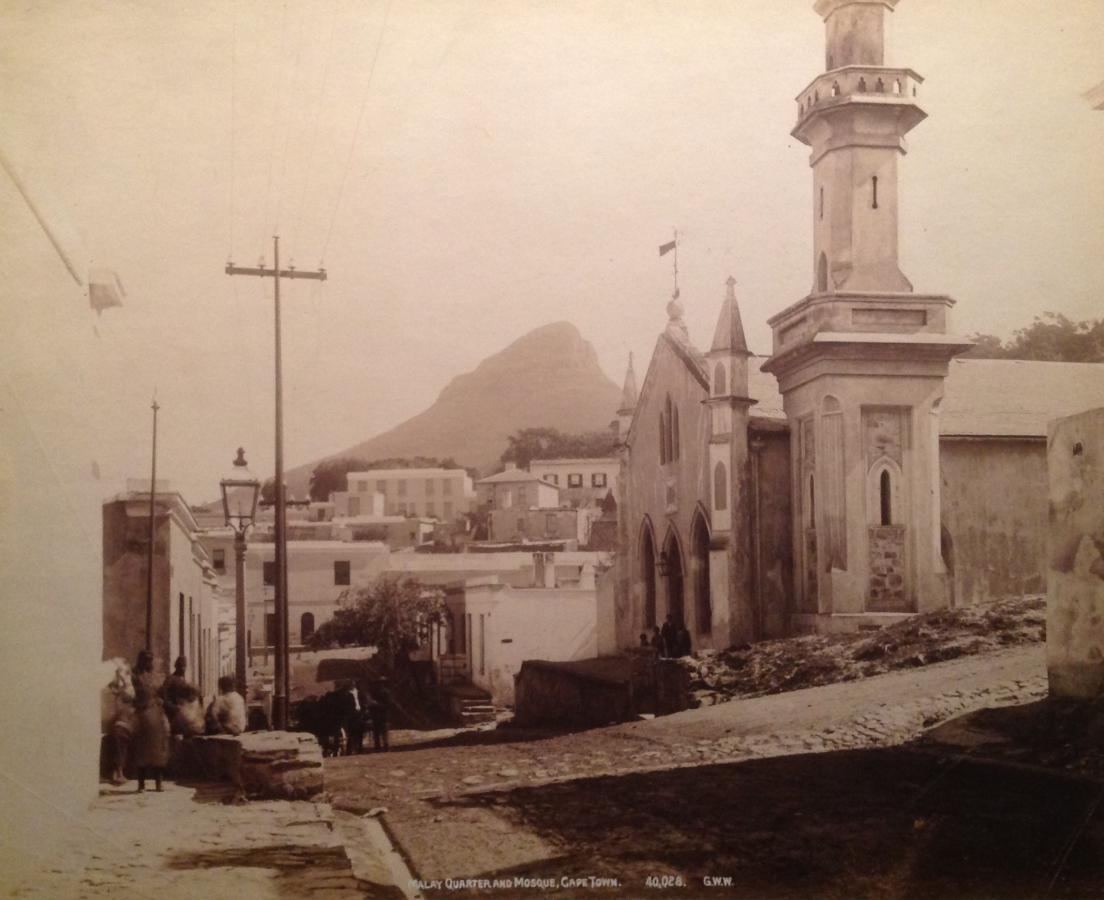
Disclaimer: Any views expressed by individuals and organisations are their own and do not in any way represent the views of The Heritage Portal. If you find any mistakes or historical inaccuracies, please contact the editor.
Knowingly or unknowingly, South African historians and researchers would have come across a wide variety of original albumen print photographs captured in South Africa during the late 1890s, all of which are titled and numbered followed by the cryptic initials G.W.W.
These photograph titles and numbers with the G.W.W. initials appear in white capital letters across the bottom of each photograph. But who or what was G.W.W.?
The intent with this article is to reflect on the pioneering Scottish photographer George Washington Wilson (G.W.W.), his photographic firm and photographers employed by the firm who visited South Africa more than a 120 years ago. Their journey, with a commercial intent, has left an immensely rich source of historical South African photographic imagery.
Attached to this article is also the first known catalogue compiled (click here to download). The catalogue attempts to record all South African images captured by GWW. Cataloguing GWW images is simplified in that the company numbered each of the original images.
Cape Town and Table Mountain showing family on day outing – photograph number 40,007
Cape Town docks – photograph number 40,019
1. The Man and his firm - George Washington Wilson (7 February 1823 – 9 March 1893)
Much has been written about the Scottish photographic pioneer, Charles Washington Wilson, yet little is known about the photographers who represented GWW in South Africa at the time.
George Washington Wilson was born near Banff in North-East Scotland. He initially trained as a portrait miniaturist in Edinburg and London, an artistic skill in which he attained a considerable measure of success. Shortly after the invention of photography Wilson recognised the commercial potential of the quickly developing photographic technologies and soon established himself as ‘artist and photographer’ in Aberdeen.
Prior to his marriage to 22-year-old Maria Cassie in Banff on 18 December 1849, Wilson fathered a son (Alexander) out of wedlock during 1842. By 1860 Maria and Charles had two daughters and three sons (George, John & William). Charles Albert Wilson, referred to later in this article, was only born during 1864. In total George had 9 children (5 sons and 4 daughters).
Between 1868 and 1869, George Wilson also worked with Astronomer David Gill in capturing a number of photographs of the moon. Wilson has also been recorded as the first person to photograph the Queen and Prince Consort at Old Balmoral and returned frequently capturing more photographs of the Royals.
By the 1880s, Wilson’s enterprise, G.W.W. & Co, a registered trademark, had become the world’s largest and best-known Scottish publisher and printer of photographic views and lantern slides. At that stage he had 15 men, 21 women, 2 boys and 2 girls in his employ. Photographic production reached an incredible million prints per annum with the Aberdeen printing works covering half an acre.
After Wilson’s retirement from active business, he once again took up the brush and painted the portraits of several eminent citizens.
Wilson died on 9 March 1893, whereafter three of his sons took control of the business. The younger son, Charles, was the more prominent photographer of the three. Sadly the business collapsed during 1907 followed by liquidation during 1908.
Taylor (2018) suggests that Wilson’s retirement may have been forced upon him by growing infirmity exacerbated by an increasing frequency of fits, diagnosed as epilepsy. Taylor continues by speculating that Wilson may well have been the victim of his own profession in that he in all probability was suffering from chemical poisoning that had slowly ingested itself into his system which in turn also resulted in mental disorder setting in. This condition is referred to as Bright’s disease (a kidney related disease) which in its advanced stages gives rise to cerebral disturbance and which was claimed to be an occupational disease common amongst photographers.
Wilson was also actively involved in civil society in that he was a member of the Chamber of Commerce and had represented an Aberdeen ward on the Town Council. He was also a director of several companies in Aberdeen.
“Quite Wilsonian” was a term frequently applied to photographs produced by GWW. This term suggests an identifiable photographic technique. This was a complimentary reflection on the artistic approach and final composition of the high-quality images produced.
Cape Town – Darling street showing much activity – photograph number 40,026
Cape Town – Standard Bank in Adderley street – photograph number 40,029. This neo classic style building was completed during March 1883
Cape Town – Parliament House and St. George’s Cathedral – photograph number 40,034. The Queen Victoria statue was unveiled on 21 January 1890
2. The photographers - South African images produced by George Washington Wilson & Co
South African photographs by GWW would have been perceived as unusual and exotic by British citizens - the target market for these photographs. The photographs also captured towns or landscapes which potentially held sentimental value to the purchaser of the image due to possible family links or personal experiences as early settlers in South Africa. Images could be ordered back home for inclusion in private family albums. At least one GWW South African Photographic Catalogue, from which these images could be ordered is known to exist, titled: Catalogue of Photographs of Life and Scenery in South Africa (circa 1900).
Ironically, George Wilson was not alive at the time when the exceptional South African photographic images were captured. The visit to Southern Africa was undertaken by GWW’s son Charles Albert Wilson and staff photographer Fred Hardie. Charles Wilson and Fred Hardie visited most of the major South African towns during their journey through South Africa. They also visited Bechuanaland (Botswana today) and Rhodesia (Zimbabwe today). The only information currently available around their visit are the surviving photographs themselves, their descriptive labels and the dates of their registration, or logging thereof onto the company’s records which would have been done on their return to Scotland.
It has been suggested that the duo may have visited South Africa twice, with the second visit being around 1903. This however is highly unlikely in that indications are that the pair have only visited South Africa once, namely during 1897.
An album of East London, produced under the GWW name during 1903, would in all probably have been compiled by a local photographer acting as an agent under the GWW trademark.
This confirms that GWW made use of local agents who may have been responsible for some of the South African pictures produced under the GWW trademark label. This can be confirmed by the lack of the “Wilsonian” quality in some of the images. The one photographic image that stands out in particular is a photograph captured of Pretoria (number 40,235) in a non-typical Wilsonian fashion in that the picture is of poor composition with poor visual detail. At this point it is not known who any of these agents or contract photographers may have been.
Pretoria – Dutch Reformed Church on Church Square, with Raadzaal in the back ground - photo number 40,129. This church, the second church to be built on the spot, was built without cement to bind the mortar and bricks in that the mortar used came from soil found nearby which had remarkable self-binding properties. The church was inaugurated during January 1885 only to be demolished 20 years later (during 1905).
Pretoria – The town as seen from the east – photo number 40,235. This photograph, of rather poor quality, is an example of an image that was not captured in typical “Wilsonian” fashion suggesting that the photograph may have been captured by an agent to GWW & Co.
South African GWW views are mainly of individual buildings, street scenes, docks, towns or scenic views including a number of photographs of cultural/ethnographic interests.
GWW photographs held at various archives, museums and libraries are not the only GWW photographs in existence. They are also occasionally found in private collections or may still to be found in albums or individual items on auctions or at flea markets. Original prints are immediately identifiable by the trademark label in white capital letters and the enigmatic GWW initials.
As in the case for both Hardie and Wilson junior, it is not uncommon for information on partners or photographic assistants in photographic establishments such as GWW & Co being thin.
It was not uncommon for sons to have continued in the footsteps of their successful photographer fathers. One such South African example was when the Caney brothers continued operating under their father’s name during the Anglo-Boer war. Images produced during this period contain Caney senior’s initials, yet he passed away prior to the war.
2.1. Charles Albert Wilson (1864 – 1958)
Charles Alfred Wilson, born during 1864, was recorded during a 1891 Scottish census as being a photographer still residing with his parents. He would have been 33 at the time of their South Africa tour during 1897.
A vast quantity of Wilson's original plates still exists to this day. During 1958, at the age of 94, Charles bequeathed what was thought to be the entire store of negatives to Aberdeen Public Library, consisting mainly of examples from Wilson’s foreign tours, including his trip to South Africa.
2.2. Fred Hardie (Assumed to be Frederick William Hardie 1864 – 1941)
To confuse matters, two Frederick William Hardie’s are recorded as being photographers in Aberdeen. The first was born during 1861 and died during 1923 which was prior to Hardie, employed by GWW, proceeding on retirement around 1935.
Recorded as a senior photographer for GWW, Fred Hardie’s work in Australia is well recorded in that he spent some two years capturing the life and times of the towns and cities of Australia. Although it has been speculated that Fred Hardie was sent to South Africa first and then to Australia, this version in all probablility is incorrect in that an Australian agent for GWW advertised in a Sydney based newspaper, The Daily Telegraph of 28 March 1896, stating that lantern slides that are for sale (or for hire) as well as “Best Published Series of Australian Photographs by GWW & Co”. This would suggest that Hardie went to Australia first, probably during 1862/63, unless of course the photographs were captured by a local agent and not Hardie himself – which is highly unlikely.
Australian images have a numbering convention with a prefix of 30, which is also an additional confirmation of the Australian visit preceding the South African visit (with a numbering prefix of 40).
It is not known how long Wilson and Hardie spent in each South African town or exactly what time of year the photos were taken. It cannot even be confirmed at this point whether they travelled together once they set foot on land or whether they went their separate ways in order to capture as many images as possible over a shorter time span.
After the closure of GWW & Co during 1908, Hardie set himself up as a portrait photographer in Aberdeen – 416 Union Street, with photographic printing premises in Justice Mill Lane. He appears to have acquired most of the working stock of negatives around that time and to have continued producing postcards for the tourist market until about 1920 (possibly explaining the existence of South African picture postcards produced by GWW), using both original GWW plates and his own accumulated stock. He retired around 1935 and sold the photographic business, including the premises at Union Street, to J.J. Farquhar who sadly passed away shortly after taking over. Archibald J.B. Strachan (1915 - 1982), still only 20 at the time, then bought the business from Farquhar's widow. He in turn offered the photographic stock to the Aberdeen University Library.
Cape Town – Table bay – photograph 40,048.
Cape Town – Table bay – photograph 40,049
3. South African GWW photograph titles and numbers
To date, only some 200 South African titles and numbers have been recorded (from an anticipated 900). See catalogue attached (click here to download).
The numbering methodology applied by GWW & Co remains unclear for various reasons:
- The company clearly applied the prefix of “40” to all South African images, but to confuse the matter, some photographs captured of London also have a “40” prefix. No South African images with a prefix other than “40” have been identified to date;
- Whilst the highest number recorded in the Aberdeen University collection is number 40,850, Townsend (2007) recorded a Kalkbay image with number 40,857, yet an even higher number, “40,867 - Ox wagon overturned in a mudhole”, was found on the internet recently. The hypothesis is therefore that GWW recorded at least 900 images whilst on South African soil;
- Numbers beyond 40,870 seem to relate to Southern African themes (Bechuanaland and Rhodesia). See image titles numbers 40,878 & 40,883 on attached catalogue;
- Whilst photographs from Cape Town and surrounds, starting at number 40,000, form part of at least the first 104 numbered images, the expectation is that a sequential numbering system would have been applied for images captured within a particular province or town, yet no logical evidence of this exists in that images produced in the same town or province have vastly differing numbers (example: the lowest number for Cape Town related images is 40,000 with the highest number being 40,857 or Port Elizabeth with lowest number being 40,121 and the highest number 40,765);
- At least two examples have been identified where two different images of the same location have the same number and title recorded (see 40,167 & 40,441). More images where the same may apply may still be uncovered;
- The Aberdeen University website also has some photographic title registration dates recorded. These vary from between September 1898 and April 1905. Again, there is not logical sequential order to when each of the numbers were registered;
- The attached catalogue only has a quarter (some 230 titles) from an anticipated 900 titles confirmed. Significant is that that the larger percentage (177 or 39%) of recorded titles are below number 40,450 with only 53 (or 12%) being confirmed for numbers between 40,451 & 40,900. It is acknowledged that this will shift as more titles/numbers are added to the catalogue.
Numbering and titles on at least 30 images in the Campbell Collection and 3 images in the Hardijzer Photographic Research Collection could not be identified due to amongst other the title being placed against a white background on the image. The Aberdeen collection also has at least one image where the inscription on the photograph is not decipherable.
Cape Town docks showing Royal Mail Ships “Dunnotar Castle” and Arundel Castle”
Bloemfontein – with Dutch Reformed Church in background - photo number 40,294. This building, completed during 1880, is today a National Monument. It is also commonly referred to as “Tweetoring kerk” (Twin tower church).
Some observations around determining the period the photographs were captured:
- One of the ships photographed, Dunnottar Castle (40,098), was only built during 1890;
- The statue of Queen Victoria, as can be seen on a number of Cape Town images, facing the Legislative Council entrance to the House of Parliament, was unveiled on 21 January 1890;
- The Bloemfontein Raadzaal (40,380) was inaugurated during June 1893;
- At least two images show electric tram activity in Cape Town. Electric trams were only in use in Cape Town from 1896 onwards, again strengthening the view that all South African images by GWW were captured during 1897;
- The fact that no Anglo-Boer war images (or the remnants thereof) have been identified to date confirms that the images were captured before 1899 (and that there was no visit post this period either);
- One photograph captured of Arum Lilies near Cape Town (40,073) suggests that they were captured during the Western Cape winter season (around August or September) in that these plants are dormant during the summer months.
4. Photographic formats produced by GWW
South African images produced by GWW were produced in a variety of formats, namely panoramas, photomontages, magic lanterns, cabinet card and postcard formats.
Cape Town – Parliament & Table Mountain – photograph number 104. Although somewhat faded, what makes this photograph unique is that it has been reproduced in a Cabinet Card format. Imprinted in gold lettering on the right hand side is: “A Happy Christmas & Bright New Year”
GWW extensively produced stereoviews and magic lantern slides in the United Kingdom. The author recently spotted some South African GWW images on the internet which were clearly converted by GWW & Co from the original image into a magic lantern slide format. At this point it is not clear whether South African magic lantern slides were marked or numbered in any way. The only way to link them, it seems, is to match each slide with the original image produced by GWW.
It still has to be confirmed whether GWW produced stereoviews of their South African work in that none have been found or identified to date.
GWW also produced postcard images of their original photographs. One match identified to date is photograph number 40,548 of Natal Police (see postcard version below). To date no GWW postcard has been identified with any numbering. Given the large gaps on the attached catalogue, especially from number 40,451 onwards, it is assumed that those numbers are probably images that have mostly been produced into postcard formats, of which the original glass plates may have been lost or destroyed. Ongoing research will also require the recording of all the titles of South African postcards produced by GWW in order to possibly fill the vast gap in the attached catalogue.
A GWW series postcard showing Zulu police in Natal. Although not numbered, this exact image could be matched with the original photograph number 40,548. This postcard (circa 1908) would have been produced by Fred Hardie post the liquidation of GWW & Co.
A GWW series postcard showing a Cape Malay family. This postcard would have been produced from an original photograph (glass negative) which would also have been numbered, yet the number of the originating photograph has not been included on the postcard. This postcard (circa 1908) would have been produced by Fred Hardie post the liquidation of GWW & Co.
A GWW series postcard showing two Cape Malay brides. This postcard would have been produced from an original photograph (glass negative) which would also have been numbered, yet the number of the originating photograph has not been included on the postcard. This postcard (circa 1908) would have been produced by Fred Hardie post the liquidation of GWW & Co.
A GWW series postcard showing a young Swazi girl. This postcard would have been produced from an original photograph (glass negative) which would also have been numbered, yet the number of the originating photograph has not been included on the postcard. This postcard (circa 1908) would have been produced by Fred Hardie post the liquidation of GWW & Co.
On closer scrutiny, four images, when placed next to each other provide for a most incredible panoramic view of Cape Town and Table mountain (namely images: 40,002; 40,003; 40,004 & 40,005).
5. George Washington Wilson Photographic Collections
The most extensive collection of GWW photographs in South Africa is found in the Campbell Collection held by the Kwazulu Natal University. Two albums in this collection contain some 96 images. Although the attached catalogue attempted to include all the titles contained in these two albums, at least 30 images could not be captured in that the number has either not been recorded or is not visibile from the images. Studying these albums in person may assist in adding at least 20 additional titles and photograph numbers to the catalogue.
The Cape Town Archives also have some 40 GWW photographs. There are also albums of GWW photographs in the South African National Library’s special collections. Two of these are not published albums but collections of 20 or so photographs mounted on thin black card and bound with tape.
The Hardijzer Photographic Research Collection consists of some 46 GWW images with number 40,001 being the lowest and number 40,380 being the highest.
The George Washington Wilson Collection, held at the University of Aberdeen’s Historic Collections, numbers nearly 45 000 glass plate negatives. These negatives had been bequeathed in 1954 to the University by Archie Strachan who had ran a photographic studio in Aberdeen and in 1958 Wilson’s 94-year-old son, Charles, gave what had remained in his possession to the Aberdeen Pubic Library (now held in the Aberdeen Art Gallery and Museum).
This collection is accessible here and provides access to some 27 400 of the 45 000 photographs. The South African catalogue on this site lists 166 items. Each item has a label or title, and many have the date of registration in the company register.
The following seven South African GWW albums, in various formats (all circa 1900), have been identified to date:
- Album of Photographic Views of South Africa – 48 views (Two Pretoria images included in this article also included in this album)
- South African Views & People
- Views of Cape Town and Districts
- Views of Cape Town and Neighbourhood
- Views of Cape Town
- Wilson’s photographs – South Africa
- Photographic view Album of East London, South Africa – circa 1903 (Published by Juta & Co – East London) – The photographer for this album may have been an East London based photographer who completed the work under the GWW trademark.
None of the photographs that appear in these albums are numbered. They have clearly been reproduced from the numbered versions. Whilst each image has a title, it is not possible to link them to an original number, where not already identified.
Orange River – A railway bridge over the Orange River – photo number 40,371
6. Closing
Whilst much may have been written about George Washington Wilson the man, very little is know about the two photographers who actually visited South Africa and captured images under the GWW brand name.
Much ongoing research is required in terms of:
- Both Charles Wilson & Fred Hardie as individuals;
- Exact dates of their visit/stay in South Africa;
- Number of images produced in all types of formats (Albumen prints, Cabinet Cards and Postcards);
- South African photographic agents who may have provided additional images to the GWW image collection;
- Updating the attached catalogue of images.
Photographs that have been pasted on a carton mounting board survive better compared to photographs that have not been pasted onto a mounting board. Those not pasted onto a mounting board are inclined to be flimsy and curl, eventually leading to deterioration due to handling over the years, resulting in some of the photographs included in this article not being in the best condition or quality.
Any additions (title and photograph number) to the attached catalogue would be welcomed and can be forwarded to carol.hardijzer@webmail.co.za
Special Acknowledgement
- Melanie Geustyn from the National Library of South Africa for her assistance in recording additional GWW titles.
- Lila Komnick for her assistance in identifying the Cape Town Mosque (Photograph 40,028).
- Australian photohistorian, Marcel Safier, for assisting in sourcing information on Fred Hardy’s activity in Australia.
Main image: Cape Town – Malay Quarter and Mosque - photograph number 40,028. The Mosque Shafee in Chiappini street (in the Bo-Kaap) still stands today and was built during 1857.
About the author: Carol is passionate about South African Photographica – anything and everything to do with the history of photography. He not only collects anything relating to photography, but also extensively conducts research in this field. He has published a variety of articles on this topic and assisted a publisher and fellow researchers in the field. Of particular interest to Carol are historical South African photographs. He is conducting research on South African based photographers from before 1910. Carol has one of the largest private photographic collections in South Africa.
Sources:
- Aberdeen University – About George Washington Wilson (www.abdn.ac.uk/special-collections)
- Campbell Collection – KwaZulu Natal University (Albums A23/001-048 & A39/001-048) (www.Campbell.ukzn.ac.za)
- Cowen, N. (1970). George Washington Wilson. Africana Notes & News (September 1970, number 3)
- Gernsheim, H. (1955). The History of Photography. O.U.P. London
- Hardijzer Photographic Research Collection
- National Library Australia (https://nla.gov.au) - Guide to the Photographs of G.W. Wilson and Company (as filmed by the AJCP)
- Taylor, R. (2018). George Washington Wilson – Artist and Photographer (1823 – 93). The London Stereoscopic Company.
- Townsend, S.S. (2007). George Washington photographs of South African Subjects. Quarterly Bulletin of National Library of South Africa 61 (1) 2007
- Wikipedia – George Washington Wilson
Comments will load below. If for any reason none appear click here for some troubleshooting tips. If you would like to post a comment and need instructions click here.

